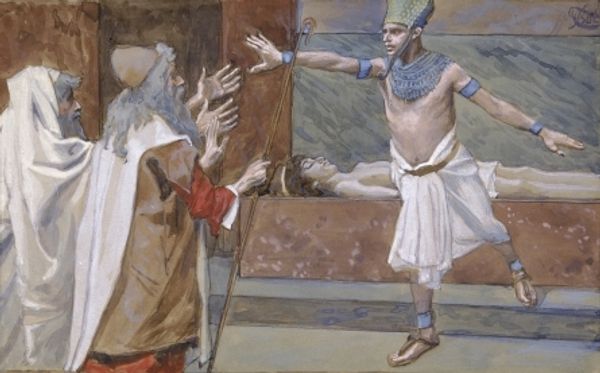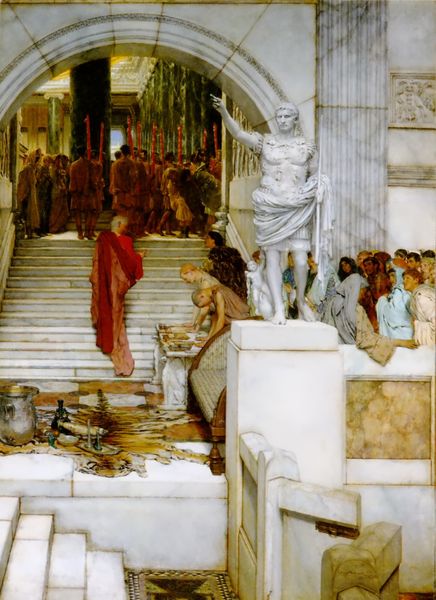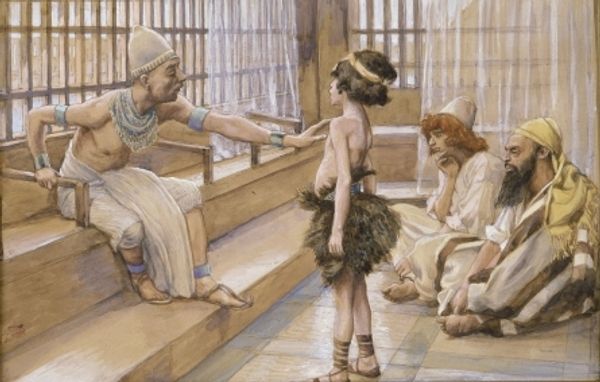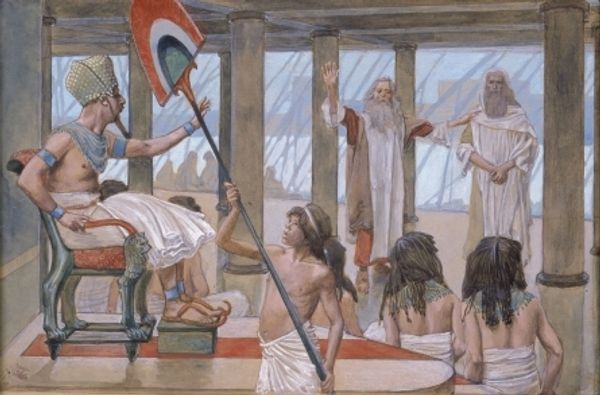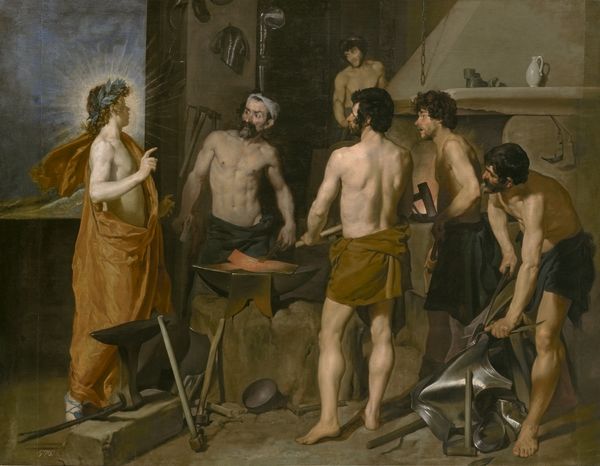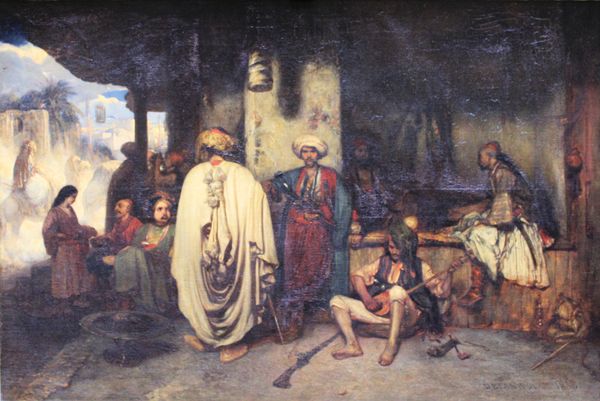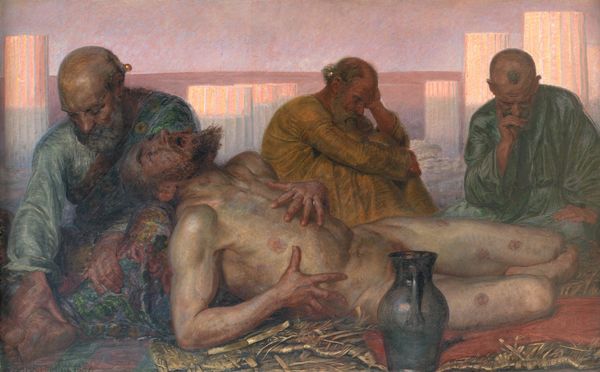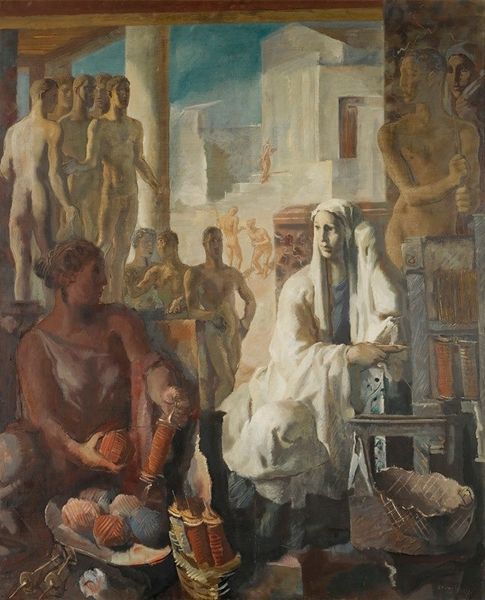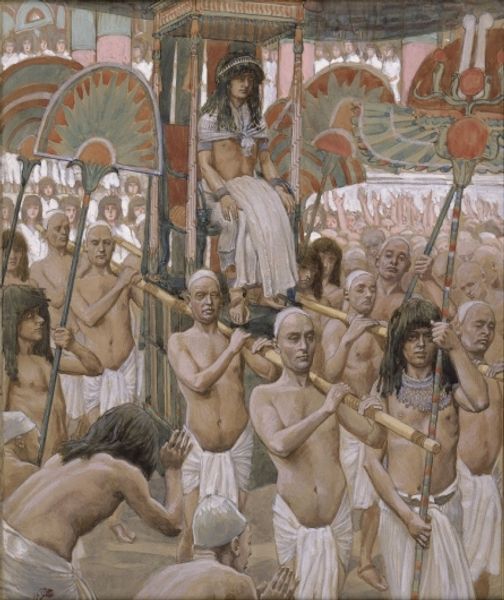
Dimensions: 17.6 x 18.7 cm
Copyright: Public domain
Curator: Let’s consider James Tissot's painting, “The Plague of Flies,” created in 1902 using gouache. Editor: My first impression? The oppressive atmosphere is immediately apparent. The frantic gestures of the figures, combined with the dense swarm of flies, create a visually chaotic scene. The pallid colors amplify the overall sense of discomfort and dread. Curator: Indeed. This work depicts one of the plagues visited upon Egypt in the Book of Exodus. Tissot's art often grapples with historical and religious narratives, framing them in a way that reflects the power dynamics between those who wield authority and those who suffer its consequences. Look at Pharaoh; visibly distressed and isolated despite his power. Editor: I see what you mean. Pharaoh’s posture is key. But also consider how Tissot organizes the pictorial space – the central, vertical orientation with the columns visually compressing the figures into a relatively shallow picture plane heightens that sense of confinement and suffocation. The composition supports the subject. Curator: Absolutely, the claustrophobia isn’t merely thematic but structural. I see it too in the visual weight of the unyielding blue columns bearing down on the people and contrasting sharply with the muted browns and beiges of their skin. He seems to be deliberately underlining the imbalance of privilege. Editor: While your analysis of subject matter and historical underpinnings offers great context, I’m particularly struck by the execution here, specifically by Tissot's command of his medium. The delicate strokes of the gouache to define details while suggesting form allow for the illusion of depth but in this almost ethereal way... a plague that has materialized and permeated this otherwise decorative, architectural interior. Curator: And thinking about our own plague times…how relevant these kinds of power struggles seem across centuries. Consider the layers of interpretation within contemporary socio-political dialogues – about governance, the relationship between religious narratives and historical events. It allows us to consider how plagues expose existing inequalities. Editor: Well, seeing it framed in that context deepens its resonances for me, absolutely. Even if the immediate experience of this painting stems from its successful formal qualities, the impact is undeniable.
Comments
No comments
Be the first to comment and join the conversation on the ultimate creative platform.

